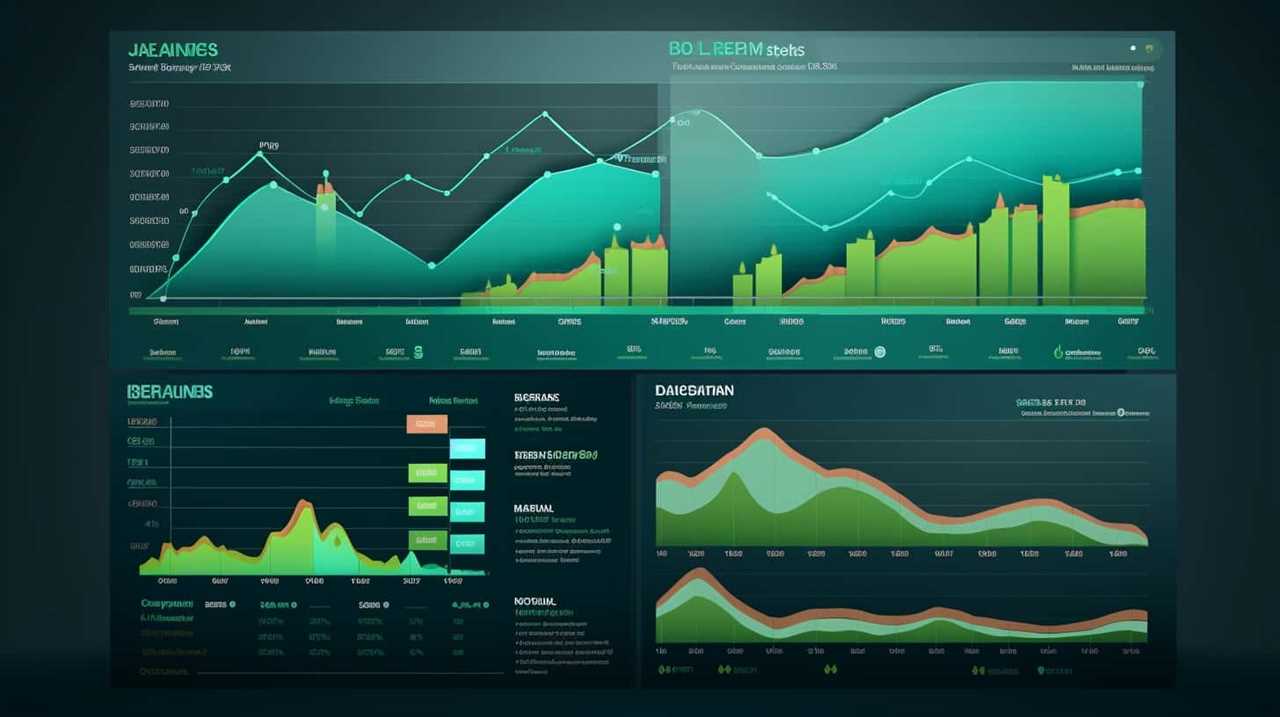Are you ready to uncover the secrets of technical SEO? We have everything you require!
In this article, we’ll break down the complexities and offer a simplified explanation of what technical SEO is all about.
From understanding its importance to identifying common issues, we’ll provide you with the key elements and best practices to help you master this crucial aspect of search engine optimization.
So, let’s dive in and demystify technical SEO together!

Key Takeaways
- Technical SEO refers to optimizing a website’s technical elements for improved visibility and ranking.
- Effective technical SEO strategies are crucial for maximizing online presence and attracting organic traffic.
- Technical SEO enhances user experience by improving website speed and mobile responsiveness.
- Technical SEO improves website visibility and organic traffic, leading to higher rankings in search results.
The Definition of Technical SEO
Technical SEO refers to the practice of optimizing a website’s technical elements to improve its visibility and ranking in search engine results. It focuses on aspects such as website speed, mobile-friendliness, crawlability, and indexability.
Implementing effective technical SEO strategies is crucial for website owners who want to maximize their online presence and attract organic traffic. By ensuring that a website is technically optimized, search engines can easily crawl and index its pages, which increases the chances of ranking higher in search results.
Technical SEO also plays a significant role in enhancing user experience by improving website speed and mobile responsiveness. Moreover, search engines consider technical SEO as an important ranking factor, making it essential for website owners to prioritize technical optimization.
Why Technical SEO Matters
When it comes to technical SEO, there are three key reasons why it matters: search engine rankings, website performance optimization, and user experience improvement.

By implementing technical SEO techniques, we can increase our chances of ranking higher in search engine results, making it easier for users to find our website.
Additionally, optimizing our website’s performance ensures that it loads quickly and functions smoothly, leading to a better user experience and increased engagement.
Search Engine Rankings
To understand the importance of technical SEO in improving search engine rankings, we must first grasp the impact it has on website visibility and organic traffic.
Technical SEO focuses on optimizing the technical aspects of a website to make it more easily crawlable and indexable by search engines. By improving website visibility, technical SEO helps search engines understand the content and structure of a website, making it more likely to rank higher in search results.

One crucial aspect of technical SEO is optimizing meta tags, such as meta titles and meta descriptions, which provide concise summaries of a webpage’s content. These tags not only help search engines understand the relevance of a webpage but also entice users to click through to the site.
Website Performance Optimization
Improving website performance is a crucial aspect of technical SEO that directly impacts search engine rankings. Website performance optimization involves enhancing the speed, responsiveness, and overall user experience of a website. A fast-loading website not only improves user satisfaction but also reduces bounce rates and increases conversion rates.
Slow websites frustrate users and can negatively affect their perception of a brand. Optimizing website performance involves various technical SEO techniques like optimizing code, compressing images, minifying CSS and JavaScript files, and leveraging browser caching. It’s also important to choose reliable hosting providers and utilize content delivery networks (CDNs) to ensure fast loading times across different geographical locations.
Additionally, selecting efficient content management systems (CMS) can greatly contribute to website performance optimization. By focusing on website performance, businesses can enhance user experience, increase conversions, and improve their search engine rankings.

User Experience Improvement
As we delve into the importance of technical SEO for user experience improvement, it’s essential to understand how optimizing website performance directly impacts search engine rankings.
User engagement and conversion rate optimization are two crucial aspects of user experience that can be greatly influenced by technical SEO. When a website is well-optimized, it loads quickly, is easy to navigate, and provides a seamless browsing experience. This leads to increased user engagement as visitors are more likely to stay on the site, explore its content, and interact with its features.
Furthermore, a smooth and efficient website enhances conversion rate optimization by making it easier for users to complete desired actions, such as filling out forms or making purchases.
Key Elements of Technical SEO
When it comes to technical SEO, there are several key elements that play a crucial role in improving website performance and search engine rankings.

One of these elements is website speed optimization, which involves optimizing page load times to enhance user experience and reduce bounce rates.
Another important element is mobile-friendly design, ensuring that your website is responsive and accessible on all devices.
Lastly, implementing structured data helps search engines understand and display your content more effectively, increasing visibility and click-through rates.
Website Speed Optimization
To enhance technical SEO, one key element is optimizing website speed. A fast-loading website not only improves user experience but also plays a crucial role in search engine rankings. When it comes to website speed optimization, two important factors to consider are website security and image optimization.

Ensuring website security is essential for protecting user data and maintaining trust. Implementing SSL certificates, using secure protocols, and regularly updating software are some measures to enhance website security.
Image optimization involves reducing the file size of images without compromising their quality. This can be achieved by compressing images, using the appropriate file format (such as JPEG or PNG), and implementing lazy loading techniques.
Mobile-Friendly Design
One key element of technical SEO is optimizing for mobile-friendliness. In today’s digital landscape, having a mobile-friendly website is crucial for both user experience and search engine rankings. Here are three key elements of mobile-friendly design that contribute to effective mobile optimization:
- Responsive design: This approach ensures that your website adapts and resizes its layout according to the user’s device, whether it’s a smartphone, tablet, or desktop. This eliminates the need for separate mobile and desktop versions of your site, making it easier to manage and maintain.
- Fast loading speed: Mobile users expect websites to load quickly on their devices. Optimizing your site’s loading speed by compressing images, minifying code, and leveraging caching techniques can significantly improve user experience and reduce bounce rates.
- Intuitive navigation: Mobile users have limited screen space, so it’s essential to have a clear and user-friendly navigation menu that allows visitors to easily find what they’re looking for. Implementing a hamburger menu, sticky navigation, and minimizing the number of clicks required to access information can enhance mobile usability.
Structured Data Implementation
We frequently implement structured data as a key element of our technical SEO strategy. Structured data benefits our website by providing search engines with additional context about our content. It helps search engines understand the information on our pages and display it in a more meaningful way in search results.

One way to implement structured data is by using Schema markup. Schema markup is a code that we can add to our website’s HTML, which provides a structured format for our data. It helps search engines categorize and index our content more accurately, leading to better visibility and higher click-through rates.
Common Technical SEO Issues
We often encounter common technical SEO issues that can hinder website performance and visibility. Addressing these challenges is crucial for successful optimization techniques.
Some of the most common technical SEO issues include:
- Site speed: Slow-loading pages can negatively impact user experience and search engine rankings. Optimizing images, minimizing redirects, and leveraging caching techniques can help improve site speed.
- Mobile optimization: With the majority of internet users accessing websites on mobile devices, it’s essential to ensure your website is mobile-friendly. This includes using responsive design, optimizing page layout, and implementing mobile-specific features.
- Broken links: Broken links can harm your website’s usability and search engine rankings. Regularly checking for broken links and fixing them is important for maintaining a healthy website.
By addressing these common technical SEO issues, you can enhance your website’s performance and visibility.

Now let’s explore the best practices for technical SEO.
Best Practices for Technical SEO
To optimize technical SEO, it’s important to implement best practices that enhance a website’s performance and visibility. Two key areas to focus on are indexation strategy and server response time.
An effective indexation strategy ensures that search engines can properly crawl and index your website’s pages. This involves creating a sitemap.xml file and submitting it to search engines, as well as using robots.txt to control which pages are indexed.
Server response time plays a crucial role in user experience and search engine rankings. Slow loading times can lead to higher bounce rates and lower rankings. To improve server response time, consider optimizing your website’s code, compressing images, and using a content delivery network (CDN).

Tools for Technical SEO Analysis
One popular tool for technical SEO analysis is Google’s Search Console. This tool provides valuable insights into a website’s performance in search results and offers various features for optimizing technical SEO.
Here are three other SEO tools that can assist in technical SEO analysis and help ensure that your website meets the requirements of a technical SEO checklist:
- Screaming Frog: This tool crawls websites and provides detailed information about on-page elements, such as meta tags, header tags, and URLs.
- SEMrush: With its Site Audit feature, SEMrush identifies technical SEO issues and provides recommendations for improvement.
- Moz Pro: Moz Pro offers a range of tools, including a Site Crawl feature that helps identify technical issues and provides actionable recommendations.
By utilizing these SEO tools, you can conduct a comprehensive analysis of your website’s technical SEO and implement necessary improvements.
Now, let’s move on to the next section, where we’ll explore the importance of monitoring and maintaining technical SEO.

Monitoring and Maintaining Technical SEO
Moving forward from our analysis of technical SEO tools, let’s now delve into the crucial aspect of monitoring and maintaining technical SEO.
Monitoring techniques are essential for ensuring the optimal performance of your website and identifying any issues that may arise. Regularly checking for crawl errors, broken links, and duplicate content can help you maintain a healthy website structure. Additionally, monitoring keyword rankings and organic traffic can provide insights into the effectiveness of your SEO efforts.
When issues do arise, troubleshooting methods come into play. These methods involve identifying the root cause of the problem and implementing the necessary fixes. This may include resolving technical issues, improving website speed, or optimizing content.
Frequently Asked Questions
How Does Technical SEO Differ From Other Types of SEO?
Technical SEO differs from other types of SEO by focusing on the technical aspects of a website, such as site speed, mobile optimization, and crawlability. It is important because it ensures that search engines can effectively crawl and index a website.

What Are the Potential Consequences of Ignoring Technical Seo?
Ignoring technical SEO can have serious consequences for our website’s performance. The importance of technical SEO lies in its ability to improve site speed, indexability, and user experience. Failing to address these issues can result in lower rankings and decreased organic traffic.
Are There Any Industry-Specific Technical SEO Considerations?
Industry-specific technical SEO considerations are crucial for success in the digital landscape. For instance, optimizing websites for mobile devices is paramount in the mobile-first era. Ignoring this can lead to a significant loss in potential customers and revenue.
How Can I Identify and Fix Duplicate Content Issues?
To identify and fix duplicate content issues, we start by identifying canonical URLs and implementing hreflang tags. These techniques ensure that search engines understand the preferred version of your content and prevent duplicate content penalties.
What Role Does Website Speed Play in Technical Seo?
Website speed is crucial for technical SEO. It affects mobile optimization and server response time. Slow-loading sites frustrate users and hurt rankings. To succeed, we must prioritize speed and ensure a smooth user experience.

Conclusion
In conclusion, mastering technical SEO is an absolute must for any website owner or digital marketer. It’s the key to unlocking higher rankings, improved user experience, and increased organic traffic.
Ignoring technical SEO can lead to disastrous consequences, such as poor website performance and lower visibility in search engine results.
By implementing best practices and regularly monitoring and maintaining technical SEO, you can ensure your website stays ahead in the competitive online landscape.
Don’t underestimate the power of technical SEO – it’s the secret weapon to online success.











